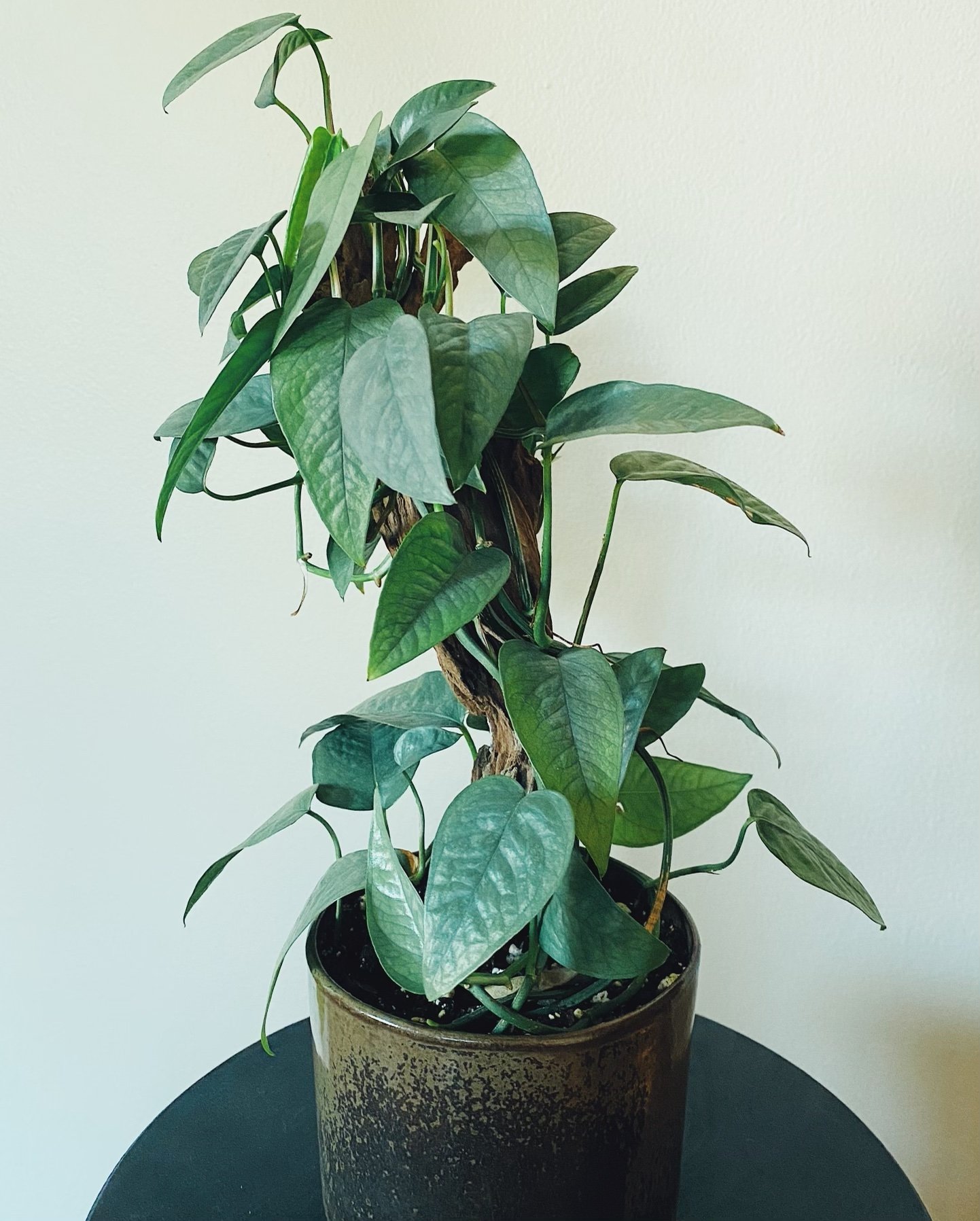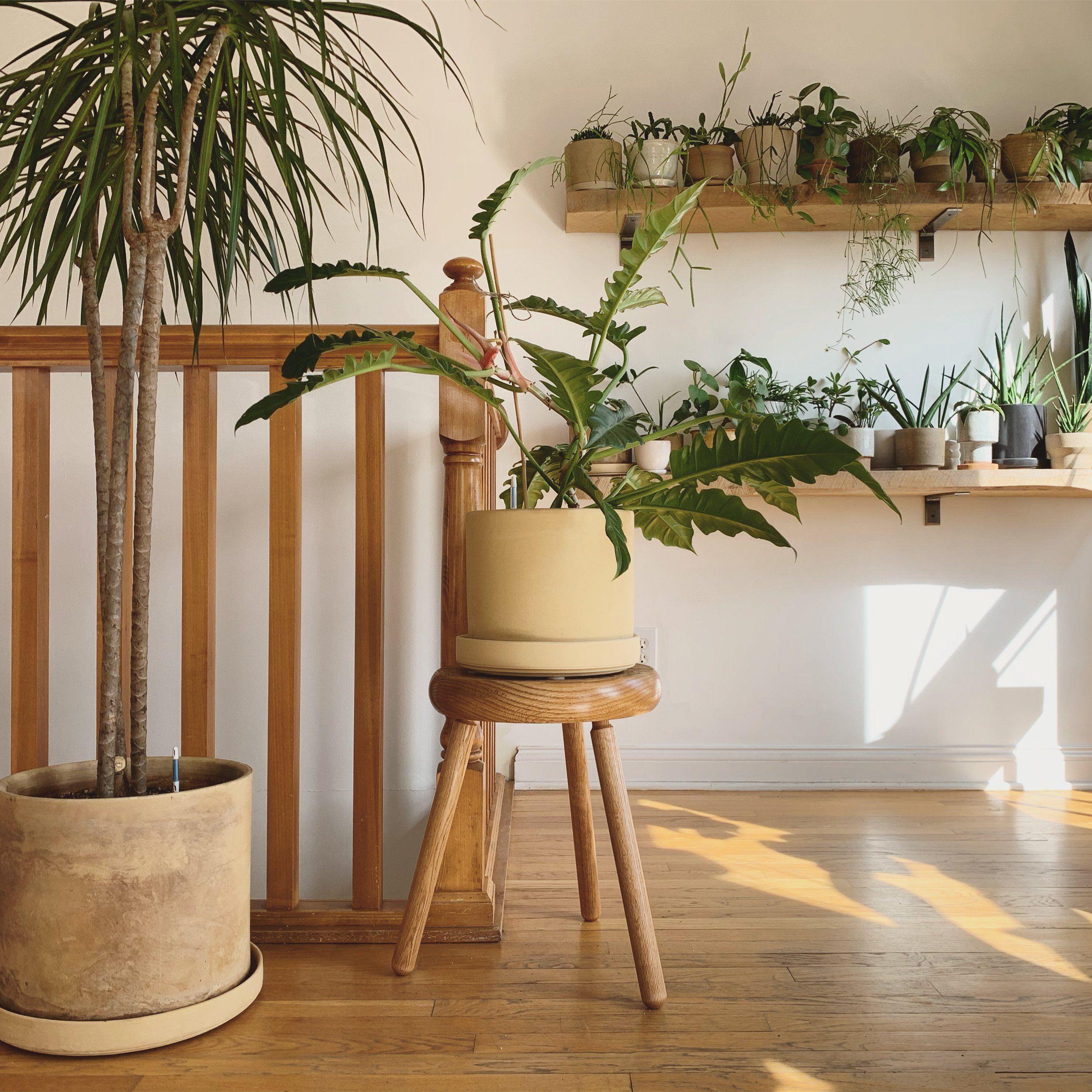Cultivate a Jungle Paradise with Aroids
If you’re wanting to grow a jungle indoors, you likely own—or have at least come across—an aroid. Aroids refer to any of the 3000+ plant species in the araceae family (think Philodendron, Monstera, Pothos, Scindapsus, Rhaphidophora, and Syngonium). These plants, in their native environments, are typically found growing in tropical rainforests and similar locations, which make them great options as indoor houseplants, as they don’t typically need tremendous amounts of sunlight. In this article, we’ll be going over different members of the aroid family, their general care, characteristics, native environments, and different ways to grow them indoors.
Philodendron wendlandii—this plant will eventually want a moss pole to climb up, but is self-supporting at its current size.
Native Environment
Plants in the aroid family are tropicals, and as such, are found growing in rainforests on the forest floor. Depending on the family and species of plant, some aroids are terrestrial (growing out of the ground) or epiphytic (growing on another plant or tree). Aroids are found on every continent in the world, with the exception of Antarctica—we can’t blame them for not wanting to grow there, though!
Many species in the aroid family start their life on the forest floor, but will eventually find their way to a tree or another larger plant. They will then make use of their aerial roots, which are the appendages that support them and allow them to adhere to and grow up a tree—at this point, once they’ve latched onto something, they will begin to develop larger leaves with a more mature leaf shape as they climb up and receive more sunlight.
A Cebu Blue Pothos (Epipremnum pinnatum ‘cebu blue’) growing up a piece of driftwood.
Light Requirements
Aroids, being plants that are often found on the forest floor, are accustomed to receiving filtered sunlight in nature. Indoors, this translates to a space that receives plenty of indirect or ambient sunlight—going the extra mile and providing them with direct morning sunlight, or pulling them at least a few feet away from a window with direct afternoon sunlight, will ensure healthy growth as well. While there are a few species that can tolerate lower sunlight conditions, such as the classic Pothos (Epipremnum aureum) and Heartleaf Philodendron (Philodendron hederaceum), aroids in general need at least indirect or medium sunlight conditions to do well indoors.
Philodendron ‘jungle boogie’ with a temporary wooden stake for support.
Watering
Most aroids are found in tropical regions of the planet, and as such, don’t prefer their soil or growing medium to dry out completely between waterings. Instead, the top 2-3 inches of soil can dry out between waterings—this usually equates to watering roughly every week to week and a half in proper lighting. While watering, as always, it’s important to water thoroughly to ensure an even saturation of the soil, which allows water to pass over the entire root system. Tell-tale signs that these plants may need water would be limp or flimsy leaves, or new leaves that are developing brown and brittle spots from a lack of water.
A Rhaphidophora decursiva growing up a pole made of coconut fiber—with a little bit of encouragement, its aerial roots have fully attached onto the pole.
Moss Poles
In nature, many aroids will start their life terrestrially, and they will then find their way to a tree or other vertical surface. At this point, they use their aerial roots to latch onto the vertical surface, and with this support, they begin to climb. Indoors, we can emulate this by giving aroids moss poles or coconut fiber poles to climb up while growing—not only is it closer to what happens in nature for your plants, but once your plant realizes it’s climbing up something, its leaves typically begin to morph to their more mature leaf shape, leading to more visually interesting leaves and a happier plant.
To get a plant to latch onto a moss pole, you will need to adhere the nodes on your plant where the aerial roots come out of to the pole with either twine or some kind of twist tie. Once doing this, keeping the contact point between the nodes and the pole well-misted will result in the aerial roots adhering to and growing into or around the moss pole. If you have a humidifier, the extra ambient humidity in the space should allow this process to happen naturally without much effort needed. If you’ve ever thought your aroid at home could use some extra support to stay upright, they probably do, and moss poles would be the best way to give them that support.
With this, we hope you’ve been able to learn something new about the plants that encompass the aroid family. If you have questions about these plants in general, or one at home, feel free to leave a comment down below or stop into one of our shops to chat with us!
Written by: Egan Thorne
Photos by: Egan Thorne & Sebastian Muñoz




